We have reached the calm seas and spectacular beauty of the sea ice! After 4 days of very rough travel across the Drake PassageStrait, connecting the Atlantic and Pacific oceans between Tierra del Fuego and the South Shetland Islands. Located about 100 mi (160 km) north of the Antarctic Peninsula, it is 600 mi (1,000 km) wide., the last two days have been extremely pleasant for all. The broken and melting sea ice is about one meter thick with almost another meter of snow on top of it and it has reduced the waves and roll of the sea to almost zero. The mighty Oden takes almost no notice of the melting flows as they are pushed aside and the helmsman only needs to adjust our course when mountainous icebergs block our path. From my perch in the bridge I can see crabeater seals almost constantly and I have also seen several emperor penguins. Snow petrels are slightly smaller than a sea gull and almost pure white. They fly in groups of 3-5 around the ship.
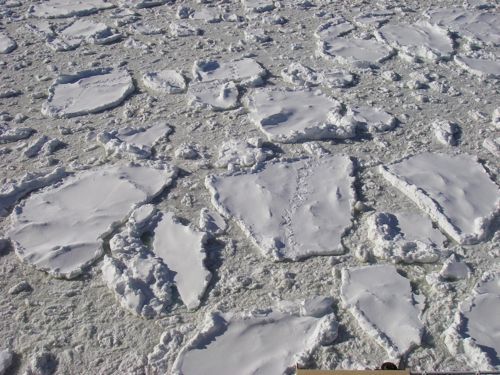
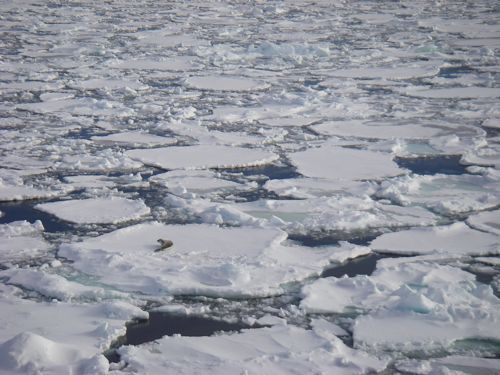
Sometimes it is hard to concentrate on my work with such spectacular scenery going by but all of the science teams are busy getting ready for our first stop at ice station #1 on Friday. The physical oceanography team has not had to wait because they can send XBT probes off the back of the Oden while the ship is moving.
Over the next few days I want to describe the various scientific teams aboard. Today I will start with my primary assignment as a member of the American half of the sea ice research team.
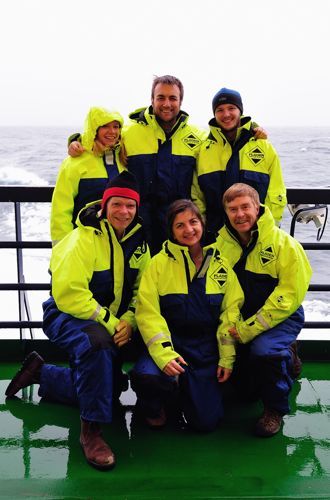
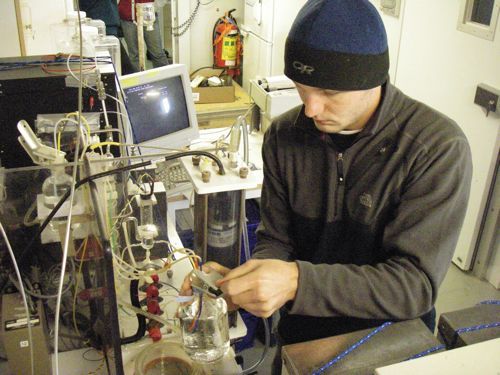
The general goal of the sea ice team is to better understand the community of microscopic living plants and bacteria that live inside the sea ice and to measure the gases that these organisms produce that may affect the composition of the atmosphere and influence climate. We work together with a team of scientists from Sweden who are studying some of the same things.
Meet the US Sea Ice Research Team
Dr. Patricia Yager, team leader. She is very interested in how microscopic sea life interacts with its environment to produce or remove gases from the water and how those gases affect the atmosphere. Generally, the microscopic plants can remove CO2 from the air and bacteria can put it back. Dr. Yager is a veteran of many Arctic research expeditions and she was also on the Oden a year ago when it explored the Southern Ocean. Recently, she also studied how nutrients carried by the Amazon River affect microscopic life as the river enters the Atlantic. Tish also believes that a scientific expedition like this can be a powerful learning experience for students. She supervises three college students on this trip and generously offered to bring me and the whole PolarTREC program along. Thanks for everything Tish!
Dr. Walker Smith, Co-Chief Scientist. You can't have a food web with penguins, seals and whales without also having a huge amount of green plants. Dr. Smith is a biologist who has been studying the green plants of the Southern Ocean on more than 25 expeditions to the Antarctic. The plants that he studies are microscopic algae (phytoplankton) that live in and under the sea ice. Once the samples come on board, he will identify the kinds and amounts of algae present. These plants not only play a critical role in the food web but they also have the ability to remove huge amounts of CO2 (a greenhouse gas) from the environment. Dr. Smith was named Co-Chief Scientist for the entire Oden expedition.
Alex Mass, PhD student. Alex's specialty is the study of environmental toxins. She knows that the algae living in and under the ice can produce toxic compounds called organohalogens and she suspects that the bacteria that live with the algae can naturally break down these toxins. She wants to measure how well the bacteria degrade the organohalogens.
Kevin Bakker, Masters degree student. Kevin says that on his first trip to Antarctica he was so impressed with what he saw and the opportunity to solve problems that it changed and focused his entire academic and scientific career plans. He is now back for his third time. This time Kevin's experience with sea ice has placed him into a leadership role within the team. His scientific focus on the team is to carefully describe the kinds of sea ice we encounter and then to measure and describe the bacteria that live in and under that ice. Kevin recently traveled to Barrow Alaska and Sweden to expand his understanding of sea ice.
Brett Heimlich, undergraduate student. Brett is a pre-med major who plans to be a doctor. He was chosen to be a member of the team because he has worked in Dr. Yager's lab and has become skilled at using a complex machine called a Somma. This delicate and unusual instrument will allow Brett to measure the amount of CO2 that is being released by bacteria into the ice and seawater.
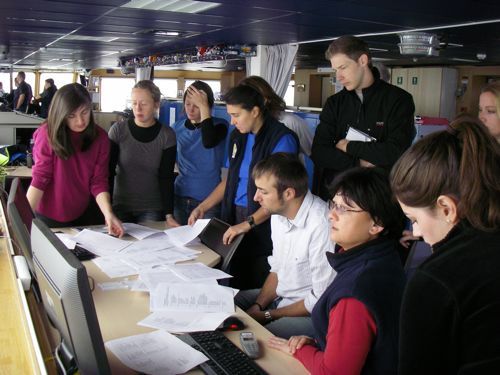
The CTDA research tool that is submerged in the water to measure conductivity (salinity), temperature, and depth.
CTDA research tool that is submerged in the water to measure conductivity (salinity), temperature, and depth. stands for Conductivity, Temperature and Depth and this is the tool oceanographers use to measure these fundamental characteristics. As this package of probes and water bottles descends to the depths of the sea it sends back a constant flow of data through an attached cable. Changes in conductivity indicate changes in the salt content of the water and combined with temperature data it shows how layers in the water column are moving. It can take over an hour for the CTDA research tool that is submerged in the water to measure conductivity (salinity), temperature, and depth. to reach over a mile down and then another hour for it to come back up. Once the sample bottles are retrieved, the team can conduct a wide range of tests to study the chemistry of the sea.
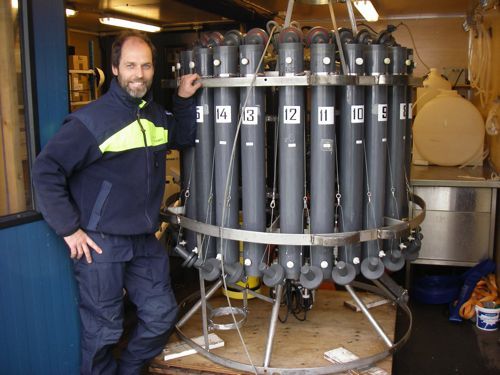
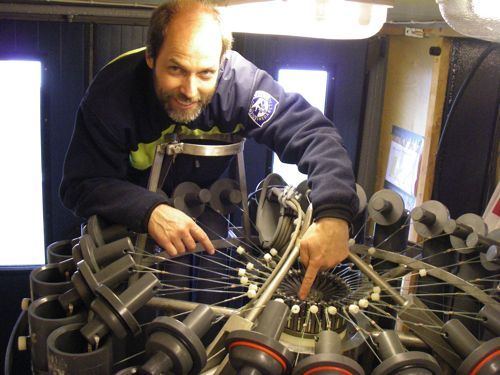
Photo of the Day!
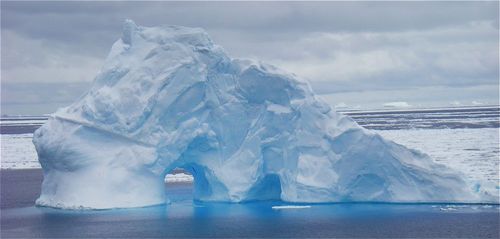
An Apology,
In closing, I want to apologize for falling a couple of days behind in responding to your questions in the Ask The Team forum. Things are beginning to happen very quickly now and everyone on board is racing to get ready for our first day on the ice. I promise to answer all of the questions soon.
A Reminder,
Be sure to go to the Live From IPY section and register to participate in our first live webinar from the Oden that will take place this coming Monday!
Take care, have fun & make memories,
Jeff Peneston


Comments